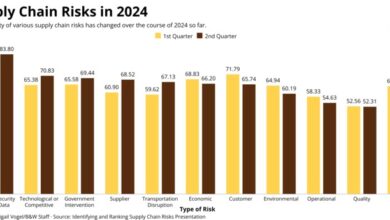Hexnode Reveals Cybersecurity Imbalance in Supply Chain: Survey

KanawatTH/stock/adobe.com
According to ‘Securing the Supply Chain Sector’ report, a survey conducted by Hexnode, IT administrators in industries with active supply chain sectors are caught between crosshairs as they strive to balance cybersecurity and productivity.
“The supply chain sector demands equilibrium among its constituent elements: technology, employees, and third-party vendors. It’s akin to a domino effect; a vulnerability in one aspect can precipitate the collapse of the entire structure,” remarks Apu Pavithran, CEO and founder of Hexnode. “By embracing a blend of technological innovation, strategic investments, and unwavering adherence to cybersecurity best practices, companies can navigate a trajectory towards a future where digitalization not only optimizes efficiency and flexibility but also safeguards the integrity and security of the entire supply chain ecosystem.”
Based on responses from over 1000 IT professionals, the survey reveals a concerning trend: 77% of employees express doubts about the effectiveness of current security measures, particularly regarding cybersecurity threats within supply chains.
Key Takeaways:
- The Hexnode survey delves into the cybersecurity dynamics across diverse verticals, identifying the prevalent challenges of the supply chain sector and charting its trajectory.
- Notably, the survey identifies a reluctance among organizations to allocate sufficient budget for cybersecurity initiatives. On the other hand, while 42% of the organizations remain unprepared for cyber attacks, 41% of surveyed employees indicated only moderate proficiency in utilizing tools and technology to thwart such attacks.
- Although businesses plan to invest in emerging technologies like artificial intelligence and automation to streamline supply chain operations, challenges such as skill gaps, expertise shortages and budget constraints persist. The survey highlights the importance of reassessing investment strategies and developing revised roadmaps aligned with the future of the supply chain. This strategic approach will enable businesses to swiftly adapt to market fluctuations, meet evolving customer demands, and effectively navigate unforeseen disruptions.



